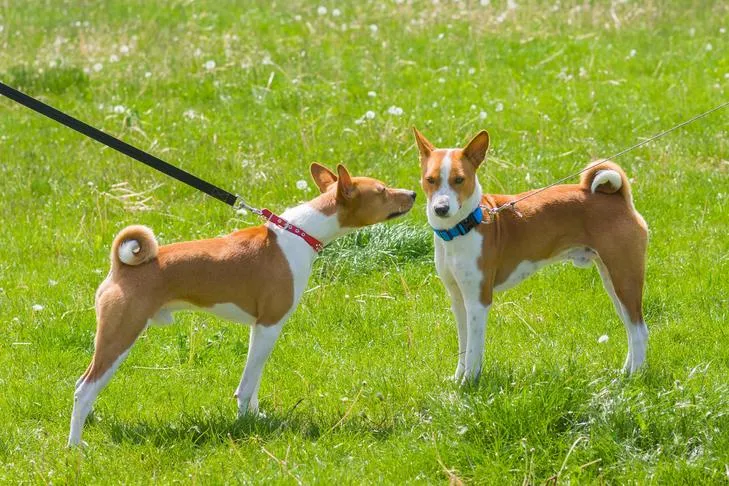Walking your dog should be an enjoyable experience for both of you, a chance to explore the world together. However, for many dog owners, the daily walk often turns into a frustrating tug-of-war, with their beloved canine companion dragging them down the street. This common behavior, known as leash pulling, isn’t just annoying; it can be unsafe for both the dog and the handler, potentially leading to injuries or dangerous situations. Beyond the physical strain, it significantly detracts from the bond and pleasure that a well-behaved walk can offer.
Fortunately, teaching your dog to walk politely on a lead is an achievable goal. It requires patience, consistency, and understanding of canine behavior, but with the right techniques, you can transform your walks from a struggle into a serene stroll. This comprehensive guide, informed by expert dog trainers, outlines ten effective strategies to help you train your dog to stop leash pulling and enjoy harmonious walks. By implementing these tips, you’ll soon find yourself walking with your dog, rather than being walked by them.
1. Always Reward Good Leash Behavior
Positive reinforcement is a cornerstone of effective dog training. It’s crucial to recognize and reward your dog whenever they exhibit the desired behavior – in this case, walking with a loose lead. Dogs are more likely to repeat actions that bring them positive outcomes. If you only correct unwanted behaviors and ignore the good ones, your dog might resort to less appropriate methods to gain your attention or get what they want.
Always carry high-value treats, praise, or even a favorite toy during your walks. When your dog walks politely, without tension on the leash, immediately reinforce this with a reward. Be generous in the beginning, providing frequent rewards to establish a strong association. As your dog’s understanding and skills improve, you can gradually reduce the frequency of food rewards, replacing them with other “life rewards” like a moment to sniff an interesting patch of grass or a brief, calm greeting with a familiar person or another dog. This ensures your dog learns that a loose leash consistently pays off.
2. Never Allow Pulling to Be Rewarded
The fundamental reason dogs pull is because it gets them where they want to go. If you continue walking while your dog is pulling, you are inadvertently rewarding their undesirable behavior. This reinforces the idea that pulling is an effective way to move forward, making the problem worse in the long run. To effectively train dog to stop pulling on lead, you must break this cycle.
The moment your dog applies tension to the leash, immediately stop walking. Plant your feet firmly and become an immovable object. Do not speak to your dog, pull back on the leash, or engage in any way that might be perceived as attention. Simply wait. Your dog will eventually realize that pulling brings the walk to a halt. This consistent approach teaches them that forward motion is only possible when the leash is slack.
 Basenjis meeting in a field outdoors, one on leash.
Basenjis meeting in a field outdoors, one on leash.
3. Wait for a Loose Leash Before You Walk
Knowing when to resume walking after a stop is key to this training method. The signal to restart is a slack leash – it should hang in a gentle “J” shape – and your dog turning their attention back to you. Initially, this might take some time as your dog tries various methods to get you moving again. However, their curiosity will eventually lead them to look back at you, wondering why the walk has paused.
The instant your dog creates slack in the leash or glances your way, praise them warmly and reward them with a treat right at your side. Then, calmly continue your walk. You might find yourself stopping and starting every few steps at first, especially with an enthusiastic puller. This is normal and an essential part of the learning process. Over time, your dog will quickly understand that a loose leash enables the walk to continue, while pulling causes it to stop, making them a more polite walking companion.
4. Incorporate Life Rewards on Your Walk
Walks should be more than just a potty break; they are vital for your dog’s physical exercise and mental stimulation. While focused on training your dog to stop pulling, it’s easy to forget these enriching aspects. Incorporating “life rewards” can significantly boost your training efforts by making polite walking even more desirable. Life rewards are everyday things your dog naturally enjoys, such as the opportunity to sniff a fascinating tree, investigate a bush, or calmly greet a stranger.
For example, if your dog walks with a loose leash for a predetermined distance (say, ten feet), release them with a cheerful “go sniff!” command and allow them a few minutes to explore. These bonus rewards clearly demonstrate to your dog that walking politely leads to highly desirable outcomes, reinforcing their good behavior more powerfully than treats alone. This approach ensures that walks remain a positive and engaging experience for your dog.
5. Maintain a Brisk Walking Pace
Often, humans walk at a much slower pace than what feels natural for many dogs. Even smaller breeds can have a quicker natural gait than their human counterparts, and this discrepancy in speed is a common reason why dogs start to pull – they simply want to move faster. Adjusting your walking pace can be a simple yet effective strategy to alleviate some of the pulling pressure.
While you can certainly teach your dog to match your preferred speed, adopting a slightly quicker, more energetic pace during training sessions can make it easier for them to learn not to pull. A brisk walk keeps your dog more engaged and less likely to feel the urge to surge ahead. This collaborative pace ensures that both you and your dog are comfortable and happy, making the training process smoother and more enjoyable for everyone involved.
 Beagle pulling on the leash to sniff while on a walk outdoors.
Beagle pulling on the leash to sniff while on a walk outdoors.
6. Be Consistent with the No-Pulling Rule
Consistency is paramount in dog training. It can be incredibly tempting to let your dog pull when you’re in a rush, perhaps running late for an appointment, or when the weather is unpleasant and you just want to get the potty break over with quickly. However, any instance where you allow your dog to pull on the leash will undermine all your previous training efforts, effectively setting you back to square one.
The “no-pulling” rule must be enforced consistently, regardless of the circumstances. Dogs thrive on predictability, and if the rules change, they become confused and less likely to adhere to them. Until your dog can reliably walk with a loose leash for a significant distance, it’s better to manage their outdoor needs in a confined area like your yard or a nearby curb, saving dedicated walks for when you have ample time and patience to reinforce proper leash manners. This commitment to consistency ensures lasting results.
7. Keep Training Sessions Short and Enjoyable
Training a dog to stop pulling on the lead can be a frustrating process, especially with a determined puller. In the initial stages, you might find that you make very little progress, perhaps only reaching the end of your driveway before having to stop multiple times. Instead of pushing your dog until both of you are feeling stressed and discouraged, it’s far more effective to keep training sessions brief, positive, and fun.
Puppies, in particular, have very short attention spans, and asking too much too soon will only lead to burnout and negative associations with training. Remember, the primary goal isn’t to cover a certain distance, but rather to achieve loose-leash walking, even if it’s just for a few steps or to the neighbor’s house. Ending a session on a high note, even after a small success, builds your dog’s confidence and keeps them eager for the next training opportunity. This approach fosters a love for learning in your dog.
8. Be Engaging During Walks
For a dog, the outside world is an exhilarating tapestry of sights, sounds, and especially smells, all vying for their attention. If you are distracted by your phone or otherwise disengaged, your dog has little incentive to focus on you. This makes it easier for them to succumb to distractions and pull you along. To successfully train dog to stop pulling on lead, you need to be the most interesting thing on the walk.
Make yourself worth paying attention to. Talk to your dog in an upbeat tone, offer unexpected treats, take quick breaks for a mini-training game, or suddenly change direction. By being unpredictable and engaging, you encourage your dog to keep an eye on you, wondering what exciting thing you’ll do next. This shifts their focus from external distractions to you, making them more likely to follow your lead and maintain a loose leash.
 Cavalier King Charles Spaniel on a lead outdoors.
Cavalier King Charles Spaniel on a lead outdoors.
9. Maintain Calmness and Composure
Walks can present numerous emotionally charged situations for your dog, whether it’s the excitement of seeing a favorite person or the apprehension caused by an approaching barking dog. It’s crucial for you, as their handler, to control your own emotions during these encounters. Dogs are highly perceptive, acting as experts at reading human emotions, and your mood can transmit down the leash, either escalating their excitement or intensifying their anxiety.
To help your dog remain calm and focused, you must project calmness yourself. If you become tense, frustrated, or anxious, your dog will pick up on that energy, making it harder for them to listen and behave appropriately. By staying relaxed and composed, you show your dog that there’s nothing to be overly concerned or excited about. A calm dog is much more receptive to your cues and more likely to maintain good leash manners.
10. Engage Your Dog in Distracting Environments
Distractions such as other dogs, squirrels, or unfamiliar people can easily cause your dog to forget their leash manners and revert to pulling. Similarly, if your dog is nervous around strangers or unfamiliar objects, they might pull to approach them or to escape in the opposite direction. In these moments, all the polite leash training can seem to disappear.
To help your dog cope, proactive engagement is key. Before your dog spots the distraction, or as soon as they do, gently redirect their focus to you. Calmly offer high-value treats, ask for a simple obedience command like “sit,” or initiate a fun, quick game such as a hand target. These exercises are easy for your dog to perform and can keep them engaged until the distraction passes. Teaching a “watch me” cue, where your dog makes eye contact on command, is also invaluable for gaining their attention and controlling where they are looking. The goal is to capture their focus before the distraction fully registers, preventing the pulling behavior from even starting. Learning to walk politely with distractions is a fundamental skill, just like teaching your dog to come inside when called, or even advanced training like how to train your dog to be a service dog.
Conclusion
Teaching your dog to walk politely on a lead is a rewarding endeavor that significantly enhances your relationship and makes every outing more enjoyable. By consistently applying these ten strategies – from rewarding good behavior and preventing pulling from being rewarded, to staying calm and engaging your dog in distracting environments – you can effectively train your dog to stop pulling on lead. Remember that patience, consistency, and positive reinforcement are your most powerful tools. With dedication, you’ll transform frustrating tug-of-wars into peaceful and pleasant walks, building a stronger, happier bond with your canine companion.
